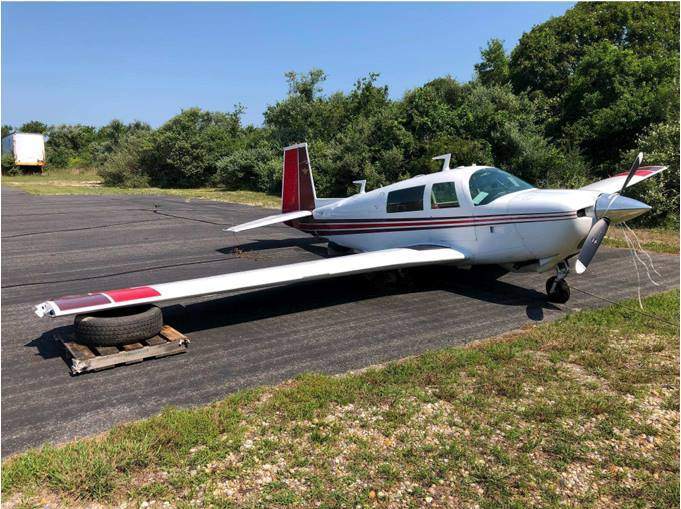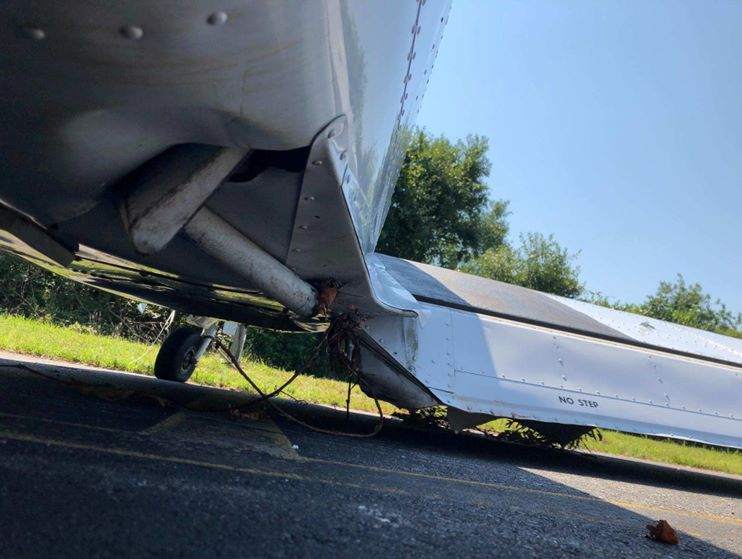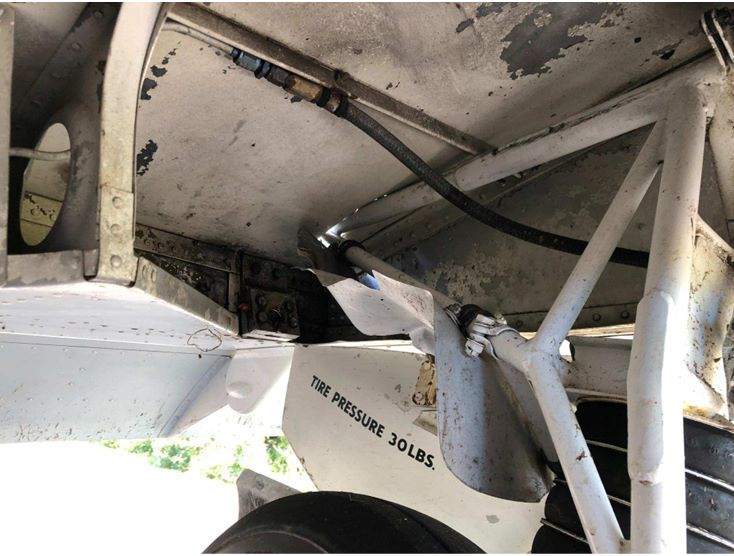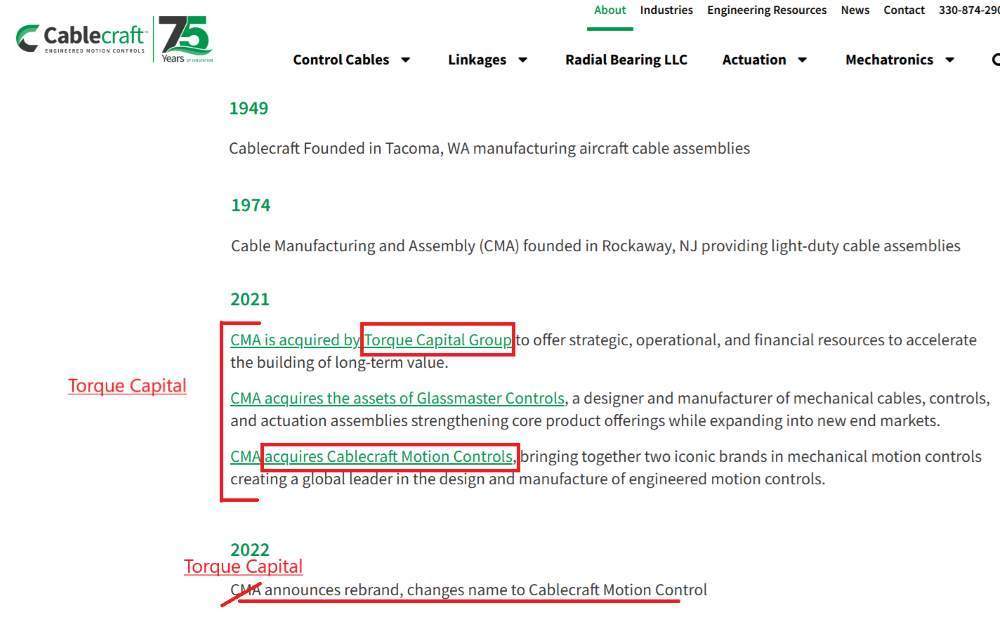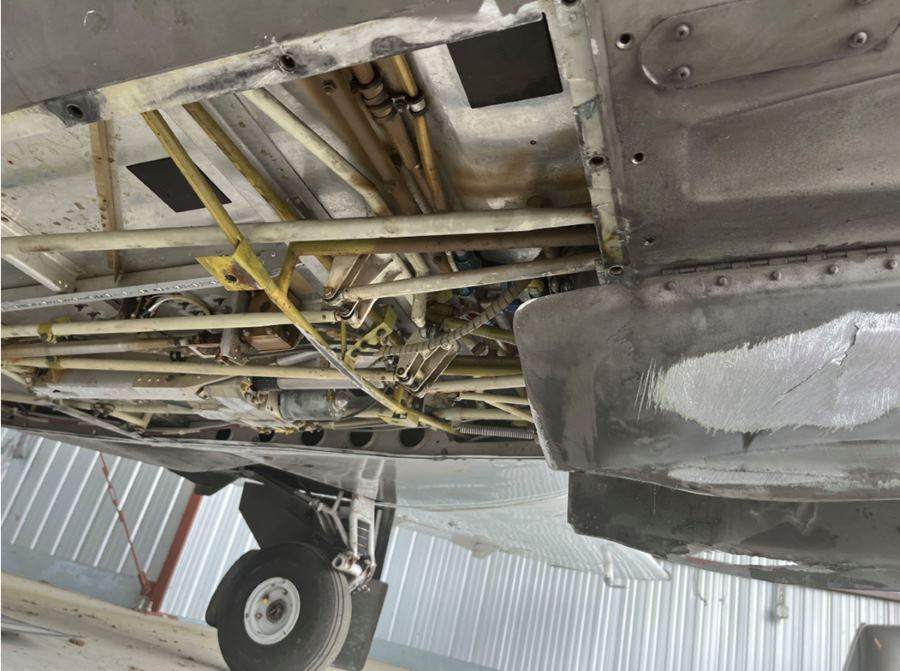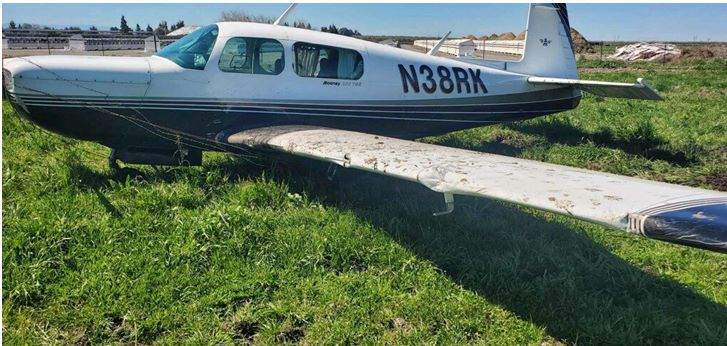
1980Mooney
Verified Member-
Posts
3,656 -
Joined
-
Last visited
-
Days Won
7
Content Type
Profiles
Forums
Blogs
Gallery
Downloads
Events
Store
Everything posted by 1980Mooney
-
Real world Ovation2 vs Acclaim vs AcclaimS Performance
1980Mooney replied to qwerty1's topic in Modern Mooney Discussion
Not sure why you would think that an Acclaim is "more expensive at every turn". The Eagle, Ovation and Acclaim all have the same long body with Continental 550 cubic inch 6. Maintenance of the landing gear (gear, pucks & actuator), control surfaces, paint, glass, lighting, fuel tankage & senders, speed brakes is all the same (ok - the Eagle did not have rudder trim or speed brakes) so the cost is the same. As you move up the model chain there is a of "layering on" of hardware and options. In addition to the turbo-charged engine and built-in oxygen, an Acclaim will likely have more hardware (accessories) that will add weight and increase maintenance cost like FIKI or/and Air conditioning, fully adjustable seats, Speed brakes were an option in the Eagle. Built-in oxygen was an option on Ovations. The additional hardware (standard or option) will need maintenance - some more regular and some more expensive than others. Acclaims will have G1000 panels - 2005 Ovations and up will have G1000 also. Older Ovations and Eagles came with vacuum and "steam gauges". What each has today varies. I think the "5-10%" increased cost was related to fuel consumption. That again is related primarily to speed. For a given altitude, increased speed in general will require more horsepower and more fuel consumption as a function of a square due to drag. Acclaim owners will go higher to do better than that with less drag in thinner air. But not many passengers like oxygen cannulas up their noses and even less like masks. As a result you will see a lot flying at 10-12 K feet. An Acclaim primarily flown at 10-12 K will have higher fuel consumption and higher engine maintenance than an Ovation. You will likely need to do a top overhaul in an Acclaim before TBO. That is over $25 K today. You already mentioned turbos. -
Real world Ovation2 vs Acclaim vs AcclaimS Performance
1980Mooney replied to qwerty1's topic in Modern Mooney Discussion
Like Groundhog day, this has been discussed before...six (6) years of discussion: https://mooneyspace.com/topic/18071-real-world-performance-differences-between-acclaim-and-ovation/ -
Real world Ovation2 vs Acclaim vs AcclaimS Performance
1980Mooney replied to qwerty1's topic in Modern Mooney Discussion
No one ever mentions when they are bucking a 70 knot headwind up high and are either screwed or need to fly down low with the 172's..... -
Interesting thought but NAVBLUE is Airbus’ flight operations software subsidiary. I doubt that Airbus would want to pay Boeing a premium price of $6 billion in precious cash that they need themselves - especially for something that is not core to manufacturing and selling aircraft.
-
Actually it did have an intercooler. The Bullet STC was never supported by Rocket because it was in a different company with another partner - “Aircraft Specialties Inc.” Yes. Because he didn’t try to modify the engine on his next projects. He used the complete engine and prop set-up from the well established Cessna 340 and 414. The only change was the engine mount and cowl.
-
I think so. Aviation Consumer Mag referred to the M20 Turbos brand as Rayjay/Consolidated. But each system differs. The original Rayjay and M20 are turbo normalized. The Turbo Bullet (an early rare Darwin Conrad creation before he set up Rocket Engineering) lowered the piston compression ratios and then overboosted to 38.5 inches. It broke crankshafts and the was an AD that restricted boost. Avoid it.
-
There were three (3) STC turbo conversions of the J. Some turbo-normalized, some true turbocharged. Turbo Bullet, M20 and original RayJay (might be a ModWorks conversion). Which are you looking at? https://mooneyspace.com/topic/9340-original-rayjay-turbo-normalizer-v-m-20-turbo-v-turbo-bullet/
-
The Missile 300 conversion of a M20J uses a Continental IO-550A in place of the Lycoming. It is not turbocharged. You are probably thinking of the Rocket 305 conversion of a M20K. They use a Continental TSIO-520 in place of the TSIO-360.
-
Gold Plated Mixture Cable wanted!
1980Mooney replied to Glen Davis's topic in Modern Mooney Discussion
You should not be surprised that Joe Brown and his family sold Hartzell to Arcline Private Equity. This is a typical dilemma for family owned companies facing transfer of ownership between generations. It is exceedingly rare today for all descendants to want to remain involved in and owning equal shares of a family business. Many times some or all the kids have no interest in the business. And the kids with “passive” ownership may not be satisfied with the slow drip of cash dividends. Siblings in a second generation transfer may hold it together “for the sake of dear departed dad” (Joe Brown’s father created the group and I think Joe had a brother in the business). But Joe Brown was facing a third generation transfer that involves equal shares of cousins. The fragile family coalition generally falls apart when when the company wants to make a bold move, make an acquisition etc and needs to borrow a lot of money. Not everyone wants more risk, deferred dividends and longer (but hoped for greater) payouts. Some family members will want to cash out now. It is easy for Private Equity to pick off a disenfranchised family member and get them to agree to “sell out for a few pieces of silver”. This creates a crisis amongst the family. The other family members usually can’t raise the cash personally to buy out the ones that want out. Like a house of cards the family ownership collapses. The easy solution is to sell the entire business out to Private Equity - everyone gets rich quick You are seeing it in all the family owned FBO’s that are selling. With the accelerating decline in integrity and ethics why would kids want to take risk and work hard when you can “get rich quick”? BTW . The same thing is going on in the services trades -HVAC,plumbing and electrical. Private equity is driving consolidation so that they can stick you with higher prices especially on urgent repairs. I have started to notice this in Houston - heavy advertising of previously little known companies with everyone driving fancy new trucks. One quoted me 3x the price of a small individual plumber driving an old truck https://sherwood.news/business/private-equity-trade-small-business-acquisitions/ https://www.forbes.com/sites/jackkelly/2024/10/17/private-equity-taking-on-skilled-trades/ https://www.forbes.com/sites/davidwmccombie/2024/07/16/private-equity-is-coming-for-your-ac-repairman/ -
It’s a pipe dream for a different reason. I suspect going forward there is going to be a major effort to NOT provide anything for “free”. I wouldn’t be surprised to hear a proposal for ATC User Fees (again).
-
If a new buyer of Jepp raises prices significantly in order to earn a return on an inflated price that they pay Boeing, I hope you don’t seriously believe that Garmin will just sit on their hands and hold prices steady. Monopoly or duopoly -there is no competition. I would expect Garmin to do the same thing. If you look at McCullough propeller prices you will find that they have increased just as much as Hartzell. When Arcline//Hartzell jammed through big price increases, they “raised the umbrella” for everyone else to raise prices.
-
Lycoming Connecting Rod Bushing AD 2024-21-02
1980Mooney replied to MikeOH's topic in General Mooney Talk
I am with @A64Pilot. This entire classification criteria seems ridiculous. “Greater than 3/16 inch” is a “chunk”. That means a piece 3/16 inch even is a “chip”. So if your engine is making metal and you only find a single “chip”, less than 5 metal particles on EVERY panel/pleat of your oil filter or less than a 1/4 teaspoon of metal the you are “OK” …. Remember that these will be the pieces that you find - what about the ones that you don’t find. - the ones that gravity traps and are lodged in the case. -
BTW - The NTSB has indicated that it will investigate. Preliminary Report number: ERA24LA317 https://data.ntsb.gov/carol-repgen/api/Aviation/ReportMain/GenerateNewestReport/194743/pdf Also: https://globe.adsbexchange.com/?icao=ab3366&lat=41.086&lon=-71.913&zoom=14.2&showTrace=2024-07-14&trackLabels×tamp=1720982044
-
Accident Mooney M20J N8201R, Sunday 14 July 2024 (flightsafety.org) Aircraft landed hard and departed side of runway and into bushes. If you look at ADSBExchange, it was quite slow on Final. His last recorded Groundspeed was 57 kts flying into a 10/16 kts 60 degree crosswind. The aircraft sustained damage to the engine and propeller from the blade strikes and will require an engine teardown inspection. Additionally, damage was sustained to the empennage, both main landing gear, the wing on both sides, the step, and belly skins. If you look at the pictures, both main landing gear have been punched through the wings. It could be a stall a few feet above the runway followed by departure or shearing forces on the main landing gear after sliding off the runway. Sadly (or interestingly to a buyer especially in this Lycoming starved environment): The engine only had 66 hours on it since Overhaul. The nose gear did not collapse, and the blades don't look bent in the pics so the prop strike might have just been with bushes rather than runway. The airframe only had 1,910 hours on it although it is much more mangled. Microsoft Word - Nasso - AIRCRAFT SALVAGE Sheet (tmhcc.com) Bids Due Nov. 15
-
Gold Plated Mixture Cable wanted!
1980Mooney replied to Glen Davis's topic in Modern Mooney Discussion
Torque Capital acquired Cablecraft and a couple other companies in 2021 and combined them. Torque's "investment criteria" is clear - "Typically control equity investments where we can actively partner with management to maximize returns". Partner with?...post Private Equity acquisition, the former company management is just a dog on a leash. http://torquecap.com/investment-criteria Vance Street Capital acquired McFarlane and a number of other aircraft part suppliers. When they acquired McFarlane they also announced that they were "partnering with" their target - complete BS - more like slavemaster and slave "partnership". https://vancestreetcapital.com/news/2021/10/vance-street-capital-partners-with-leading-general-aviation-pma-manufacturer-mcfarlane-aviation/ They formed Victor Sierra Aviation Holdings LLC (“VS Aviation”) to market them. They have 14 companies so far. https://victor-sierra.com/news-insights/ -
Lycoming Connecting Rod Bushing AD 2024-21-02
1980Mooney replied to MikeOH's topic in General Mooney Talk
Also when you remove exhaust hardware that has not been removed in a long time, you may find more problems that require more work - slip joints, flanges, - or corrosion may conspire to induce problems like breaking a stud. -
In his Accident Report (he added a wandering typed six (6) page "explanation" to the Report). He provided an "Assessment" of the day of his accident. (The following is a direct quote from what he wrote to the FAA/NTSB). He said that he, as a careful pilot, can: A. Be an Idiot B. Experience temporary "insanity" C. Experience a form of "Getthereitis". (Mine was with fuel). D. Be overtaken with "Confirmation bias" He went on to state: "If you want me to get into my metaphysical answers, my spit balling: A demon clouded my brain and wanted to kill me God, who knew I never wanted to sell the plane, was "herding" me to a different life. Why? Because having a plane is a "rich man's game". If I am going to retire in the next 5-10 years, the plane was costing me too much. I never would have sold it to get ready for being a "non-earner" in retirement. So God "arranged" me to be separated from the plane without injuring anyone. HOWEVER, I may try to rebuild N38RK if I can. As I said, I am "spit balling" with the metaphysical answers. I am sure there are other, more interesting metaphysical "reasons" for this accident, subliminal, subconscious, whatever." To answer @Echo, the current owner has owned it for 14 years, there does not appear to be a change in ownership, and it has not appeared on any aircraft salvage/auction site yet. However as @kortopates highlights that he may be "now uninsurable even with training wheels" - although a well meaning pilot/owner there may be several issues preventing him from getting this plane back into the air.
-
This reminds me of the late '60s commercial: On August 8, 2024 the new owner of N4248H, a 1978 M20J, moved his plane from the seller in Kokomo, IN to his base KHAO, Hamilton, OH. On October 24, someone flying the plane was practicing Touch & Go's. One, two, three, five....ten! On the tenth (10th) "Touch & Go" it did not "Go"..... The registered owner appears to be 82 years old per internet. FAA Airman shows him with a Private Pilot license dated 12/14/2022 but no Medical The cryptic report says "Veered off runway" and "Main gear collapsed". Perhaps when it shows up at a salvage auction more can be learned of the real order/circumstances https://www.asias.faa.gov/apex/f?p=100:96:10092349662185::::P96_ENTRY_DATE,P96_MAKE_NAME,P96_FATAL_FLG:04-NOV-24,MOONEY https://www.aircraft.com/aircraft/234670793/n4248h-1978-mooney-m20j-201 https://www.flightaware.com/live/flight/N4248H https://globe.adsbexchange.com/?icao=a50df3&lat=39.370&lon=-84.511&zoom=14.3&showTrace=2024-10-24&trackLabels×tamp=1729806383
-
G100UL is available at Reid Hillview (RHV)
1980Mooney replied to UteM20F's topic in Miscellaneous Aviation Talk
First of all the next Faa Re-authorization Bill is in 5 years. That train just left the station and this issue was not in it. Second I think you have it backwards. Historically the FAA had the willingness. As @Pinecone highlights above, the Supreme Court's "Chevron Defense" ruling effectively gives the Courts more say over the FAA decisions. Now the FAA will have to contend with ignorant judges that have to be educated (and will be swayed by counsel seeking alternate interpretations). Of course no-one at the FAA now wants to stick their neck out for anything controversial even if it makes sense. People want it both ways. When it suits their personal best interests, they want the FAA to make broad sweeping decisions for the sake of efficiency and speed. And when the same people disagree with anything not in their personal best interest they want to be able to force it out of the FAA and back into the Courts mucking decisions up into long drawn out legal affairs. https://mooneyspace.com/topic/48867-the-earth-shook-a-little/ -
I bet if the Commercial Pilot/CFI had just told the FAA that "I forgot to put the gear down", that this probably would not have turned into a NTSB Investigation. It probably would have just been a fleeting posting without any detail in the FAA ASIAS (Preliminary Accident and Incident Reports). His identity would remain anonymous. It would be between him and his insurance company. If any of you have searched the FAA "Accident and Incident Report" database you know that the FAA stopped providing any information after December 2019. https://www.asias.faa.gov/apex/f?p=100:12:::::: There are 3,394 Mooney accidents and incidents in the database from January 1, 1978 to December 31, 2019. The last Mooney incident listed is December 30, 2019. https://www.asias.faa.gov/apex/f?p=100:18:::NO::AP_BRIEF_RPT_VAR:20191230019769I There is nothing after that for any brand of GA aircraft. Instead, everyone now knows he screwed up. His name is shown in the Accident Report in the NTSB Docket.
-
Final is out on N3777, a 1985 M20K. The report shows that it was converted by Rocket Engineering to a Rocket 305 with the TSIO-520. The written Accident Report notes that the plane had just completed Annual after having been idle for a long time. The last shown flight on FlightAware is in April, 2021. On May 3, 2024 the 4,850 hour pilot (75 hours in an M20K) flew the plane for the first time after the Annual as a test flight at Conway Horry, SC (KHYW). On approach to land he told the investigators that he landed "with both the flaps and landing gear extended". "A post-accident examination of the airplane revealed minor damage to the nose landing gear door and no damage to the main landing gear doors. The landing gear was subsequently cycled several times using both normal and emergency methods. No evidence of any pre-impact mechanical malfunctions or failures were noted that would have precluded normal operation of the landing gear system. Based on this information, it is most likely that the pilot landed the airplane with the landing gear still retracted." Probable Cause and Findings The National Transportation Safety Board determines the probable cause(s) of this accident to be: The pilot’s failure to extend the landing gear before landing. Findings Aircraft Gear extension and retract sys - Not used/operated Personnel issues Forgotten action/omission - Pilot https://data.ntsb.gov/carol-repgen/api/Aviation/ReportMain/GenerateNewestReport/194268/pdf The steel frame, lower tubular is nearly ground through. You don't usually see that. He must have landed really hot in order to grind completely through the belly skins.
-
Not much to learn here except that the pilot/long-time owner somehow thought 1/4 tank of fuel in one wing was equal to 20 gallons. In his Accident Report, he told the NTSB that he thought that should have lasted 1.5 hours (his other tank was on Empty and the Low Fuel light was lit). The pilot stated that he is risk averse, and conservative in nature and has never departed with the low fuel light on before but, he surmised, the cheaper fuel at the destination likely influenced his decision to proceed with the flight. https://data.ntsb.gov/carol-repgen/api/Aviation/ReportMain/GenerateNewestReport/193957/pdf Per Final: The pilot reported that he intended to service the airplane with fuel at the destination airport, which had cheaper fuel and was a short distance away. During the preflight inspection he observed that the low fuel indicator was illuminated for one tank, and the panel gauge for the other indicated it was ¼ full, which he estimated would equate to about 20 about gallons. He cross-checked the levels with the airplanes fuel totalizer system, which indicated 20 gallons of fuel remained. While enroute, the pilot noticed the fuel gauge level dropping faster than he anticipated, and a short time later the engine lost all power due to fuel exhaustion. The pilot performed a forced landing onto a dirt road in farmland, after maneuvering the airplane under a power line. The airplane struck fence on roll-out and sustained substantial damage to both wings. The pilot and passenger were not injured. The pilot reported there were no preaccident mechanical failures or malfunctions with the airplane that would have precluded normal operation. The airplanes low fuel indicators illuminate when about 2 ½ gallons of fuel remain in their respective tanks. Each tank holds about 9 gallons of fuel when ¼ full, rather than the 20 gallons the pilot had estimated. The pilot stated that he had mistakenly used the airplanes total fuel capacity of about 76 gallons when making that calculation, rather than half the value that a single tank could hold. He also stated that he may not have properly adjusted the totalizer the last time he serviced the airplane with fuel, hence its reading was not accurate. He stated that because the totalizer and fuel tank gauge readings were similar, due to confirmation bias he concluded that sufficient fuel remained. Landed through a fence and wire:
-
I liked these quotes: On the ground "run ups", the prototypes could reportedly be heard 25 miles (40 km) away. The shock wave was actually powerful enough to knock a man down; an unfortunate crew chief who was inside a nearby C-47 was severely incapacitated during a 30-minute ground run. Coupled with the already considerable noise from the subsonic aspect of the propeller and the T40's dual turbine sections, the aircraft was notorious for inducing severe nausea and headaches among ground crews. In one report, a Republic engineer suffered a seizure after close range exposure to the shock waves emanating from a powered-up XF-84H.



